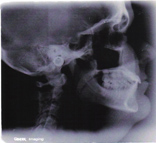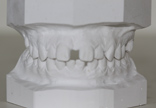
Orthodontic Records
Orthodontic Specialists, P.A.
Overview
In order to achieve a proper diagnosis, full diagnostic records must be taken and reviewed so that Dr. Gau has a comprehensive understanding of the orthodontic problem. Records include:- A film of the patient's head (cephalogram)
- A film of the patient's jaw and teeth (panorex)
- Models of the patient's teeth
- Facial photographs and intraoral photographs
Cephalogram
The Cephalogram details the patient's dental occlusion (bite) and the relationship between the occlusion (bite) and the skeletal structure. It is a full skull x-ray of the patient's profile. Dr. Gau can then determine the appropriate treatment plan that will result in the most attractive and functional facial harmony.< top

Panoramic X-Rays
The panoramic film is a single x-ray that details all of the patient's teeth and the relationship to each other. This is an important image that will help Dr. Gau determine the appropriate treatment required.< top

Impressions of the Teeth
Plaster casts from the impressions create a lasting record that is not only beneficial in determining and providing the appropriate treatment but also a tremendous before and after tool that dramatically reminds patients of the progress they've made towards the desired end result.< top

Facial and Intraoral Photography
We fully document through photography each new patient's pre-treatment facial and intraoral condition in three views and teeth in six views.< top



